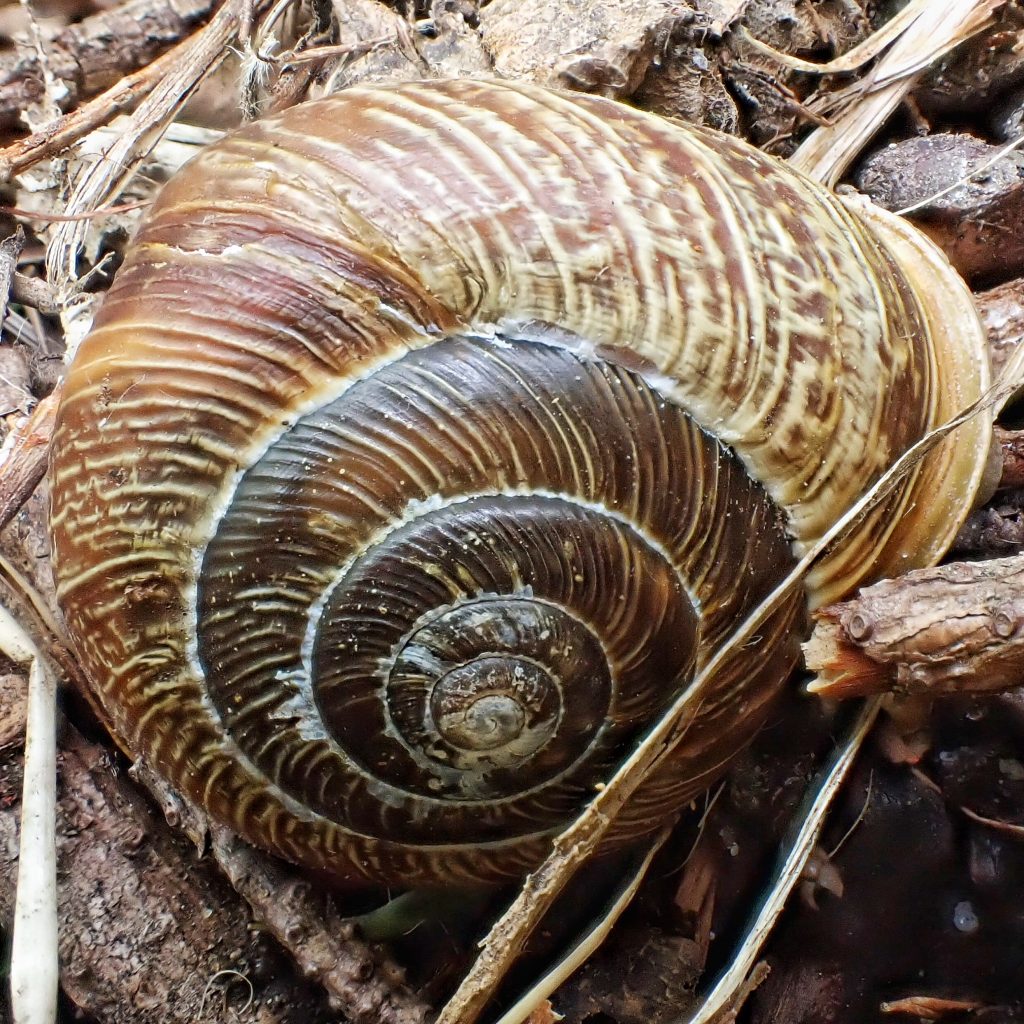
These snails were some of the other cool finds from my trip to the confluence of the Green/NF Toutle rivers with my grandson Lee, although I think I actually spotted at least some of these before he did. Snails are fascinating creatures to me, with their slow but seemingly inexorable traversing of the landscape, and their beautiful shells. Until researching this post I hadn’t noticed the correlation between Allogona townsendiana (Oregon forest snails) and Urtica dioica (Stinging nettle), but in retrospect I can see that it is true. But I had noticed that I have only seen them in areas with mixed maple/alder woodlands. I also get a kick out of how often I find them climbing trees, which, despite the fact that it makes me think of rambunctious kids and appeals to my own desire to climb things, may well be an effort to escape snail eating carabid beetles.
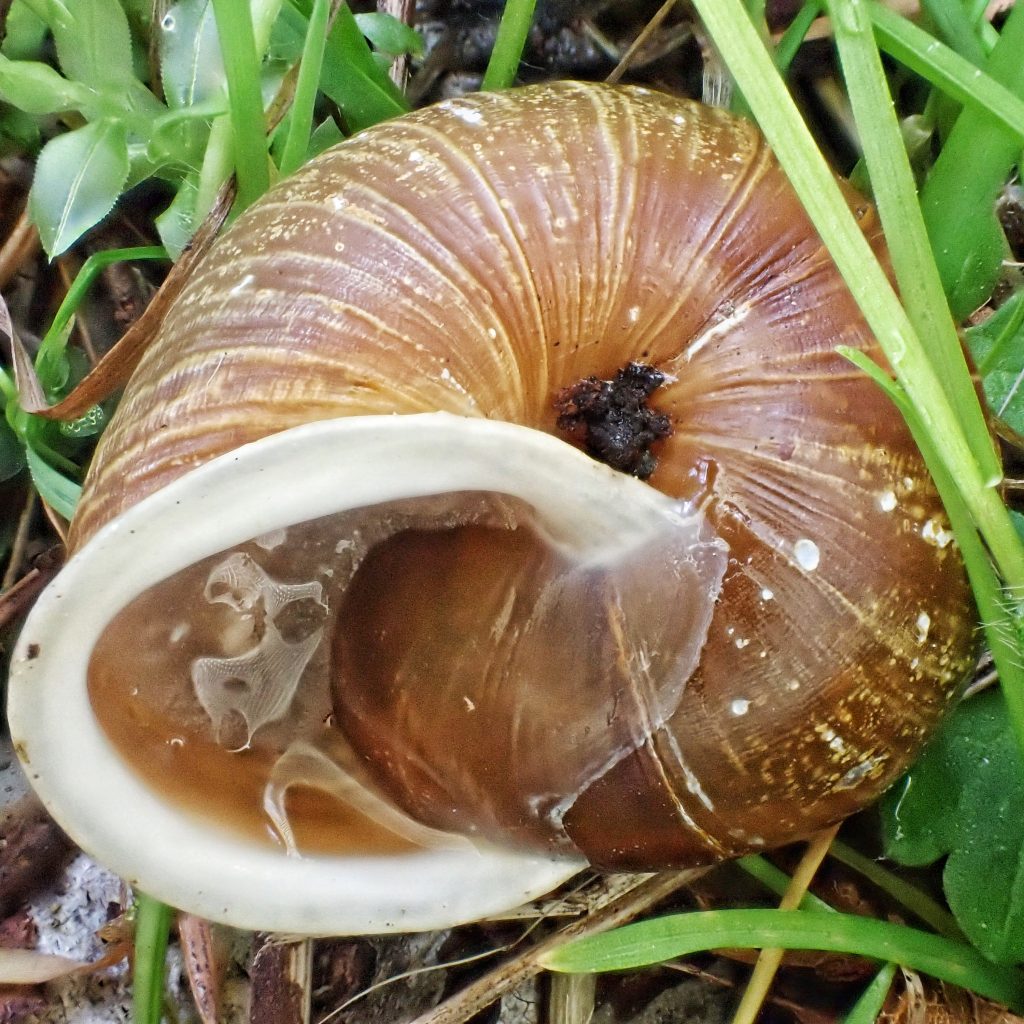
As will be obvious, I made extensive use of the outstanding paper “Life history and habitat requirements of the Oregon forestsnail, Allogona townsendiana (Mollusca, Gastropoda, Pulmonata, Polygyridae), in a British Columbia population” (Karen M.M. Steensma, Patrick L. Lilley,Heather M. Zandberg; 2009), and quoted several sections in their entirety. This was done because not only was the information fascinating and exhaustive, it was surprisingly readable for a scientific paper. Oddly though, for a paper as in-depth as this one, they were not able to positively ascertain what the adults feed on, possibly because most of their feeding happens at night.
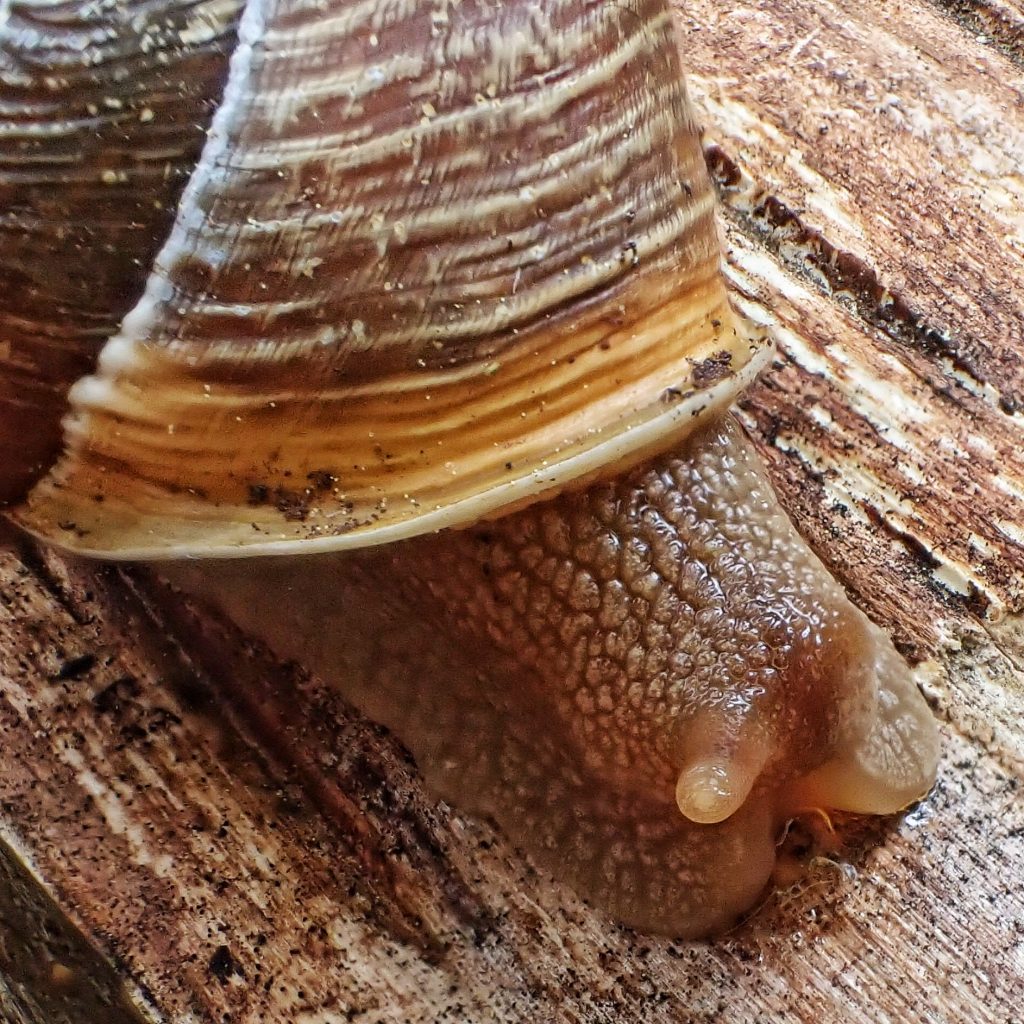
The importance of these snails is highlighted in the opening paragraph; “Conservation of terrestrial gastropods has become of increasing concern in recent years as population declines and disappearances continue to be documented (Lydeard et al. 2004; Steinitz et al. 2005). Urbanization, forestry practices, and other anthropogenic changes, including habitat destruction and introductions of exotic predators, can have strong negative effects on snails with a limited range and low-dispersal abilities (Strayer et al. 1986; Baur & Baur 1990; DellaSala et al. 1999; Prezio et al. 1999; Hylander et al. 2004). Terrestrial gastropod conservation is important for several reasons: (1) Land snails and slugs play a significant role in decomposition and other food web processes (Mason 1970; Richter 1979; Committee on the Status of Endangered Wildlife in Canada [COSEWIC] 2002); (2) they often serve as dispersers of plant seeds and important fungal spores (Richter 1980; Gervais et al. 1998); and (3) they contribute to the overall biodiversity and health of ecological communities (Richter 1979, 1980). Studies in various habitats suggest that terrestrial gastropods may serve as critical indicator species for ecosystems.” Steensma/Lilley/Zandberg (2009) http://www.sccp.ca/sites/default/files/species-habitat/documents/life%20history%20and%20habitat%20requirements%20of%20ofs%20in%20a%20bc%20population_Steensma_etal_2009_IVB_OFS.pdf
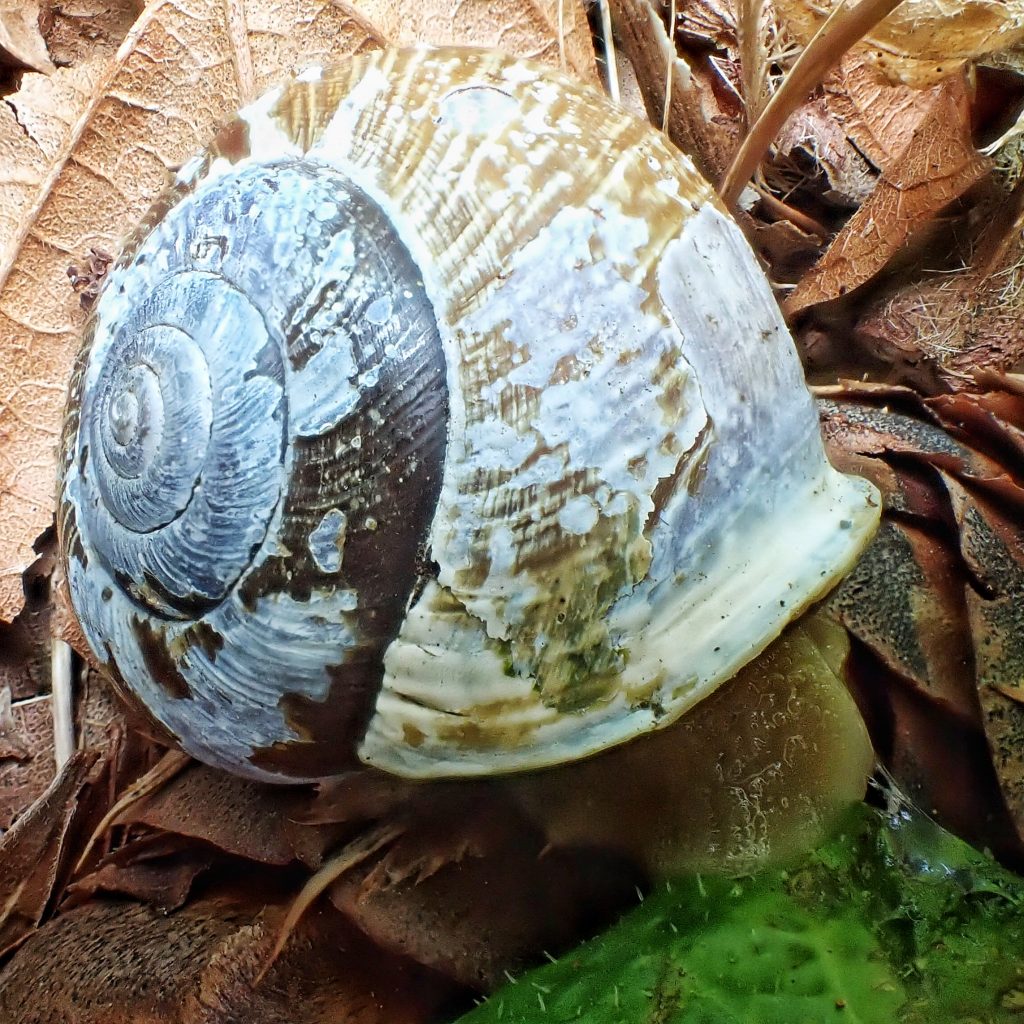
Description– The last whorl has sculpted malleations (picture the marks made if one took a hammer to a piece of brass) as it approaches the aperture, and lacks any teeth in the aperture; “The shell diameter is 1.4 to 1.7 times height, with 5 to 6 whorls that contain lighter colored axial ribs, and ranges from 28 to 35mm. The umbilicus is about 12% of the diameter and partly covered by the thickened white reflected lip of the aperature. The periostracum (outer covering on shell) is reddish-brown and usually at least partially eroded revealing white shell substance beneath. The last whorl descends in full-grown shells. The body is cream colored.” University of Utah entry for Allogona townsendiana Untitled Document
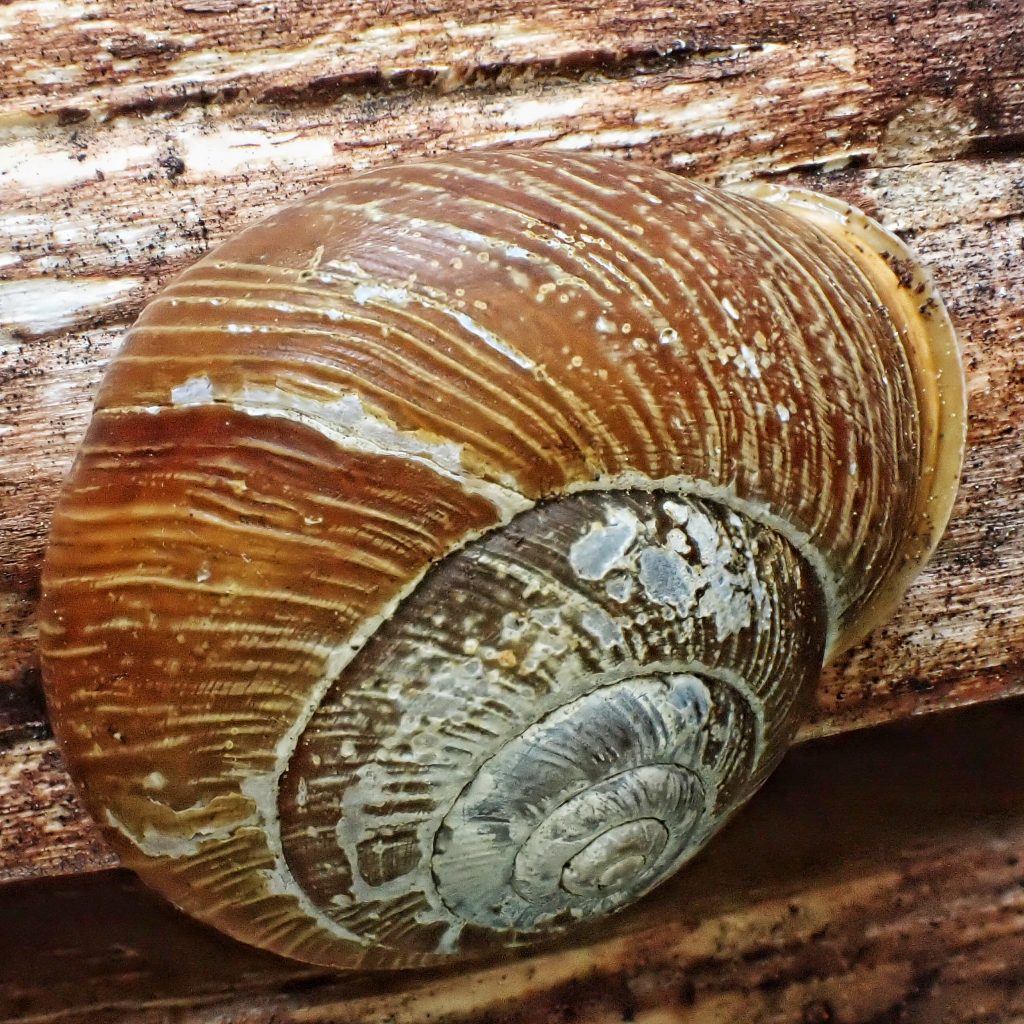
Similar species– Allogona ptychophora is smaller, has ribbing rather than malleations on the last whorl, and only overlaps with A. townsendiana in the Columbia River Gorge; Cryptomastix devia is smaller, the umbilicus is more covered, is lighter in color and lacks malleations on the last whorl, and usually has a tooth in the aperture; Monadenia fidelis (Pacific sideband) has at least one light colored band contrasting and separating darker bands.
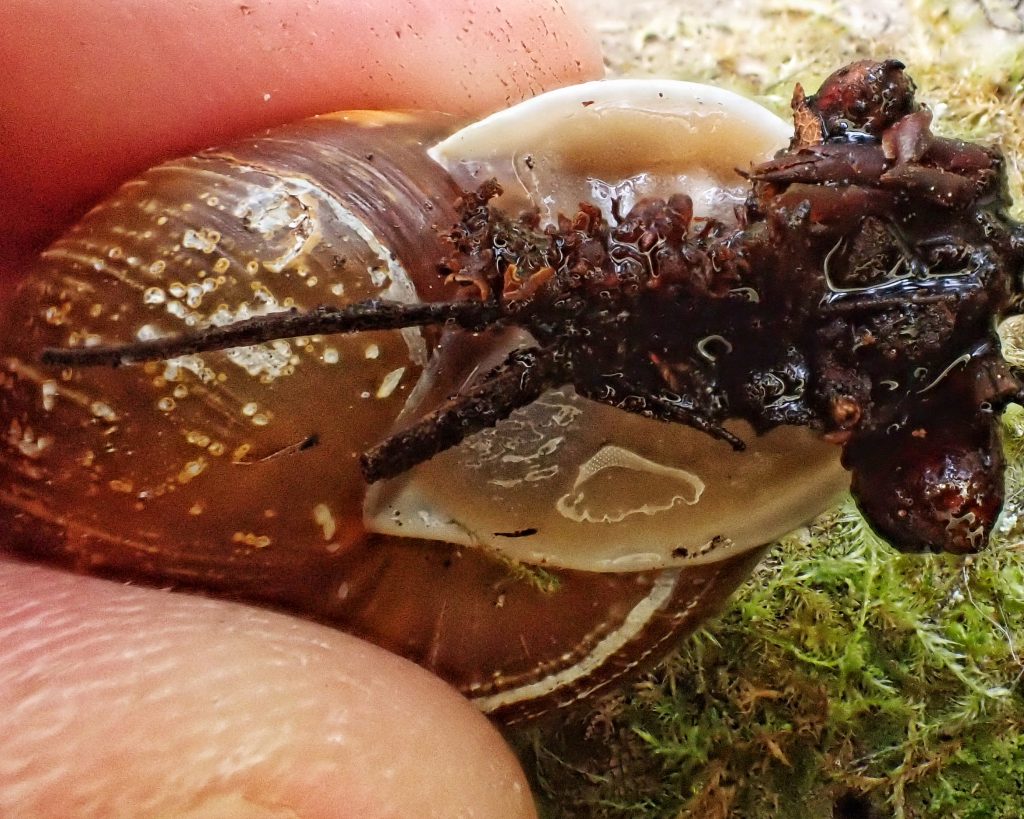
Habitat– “…occupies mixed-wood and deciduous forests, typically dominated by Bigleaf Maple (Acer macrophyllum). Dense cover of low herbaceous vegetation is usually present (Forsyth et al 2002). Stinging Nettle (Urtica dioica) was also often present. In addition to providing food, the presence of nettles may discourage the chance of their habitat be trampled, but may also suggest moist surroundings. Allogona townsendiana probably requires coarse woody debris, large amounts of leaf litter, and both living and older, dying vegetation (Forsyth et al 2002). The forest canopy provides shade that conserves moisture and better regulates fluctuations in temperature and moisture conditions on the forest floor (Forsyth et al 2002). In Washington, A. townsendianais found in seaside locations where a portion of the population lives under logs just above the highest tides in association with the Pacific Sideband Snail (Monadenia fideli). Allogona townsendiana occurs at low elevations. “ Allogona townsendiana entry on the UWL Website (University of Wisconsin
Range– West of the Cascades from the southern Willamette Valley to sw BC, including the mid and western Columbia River Gorge.
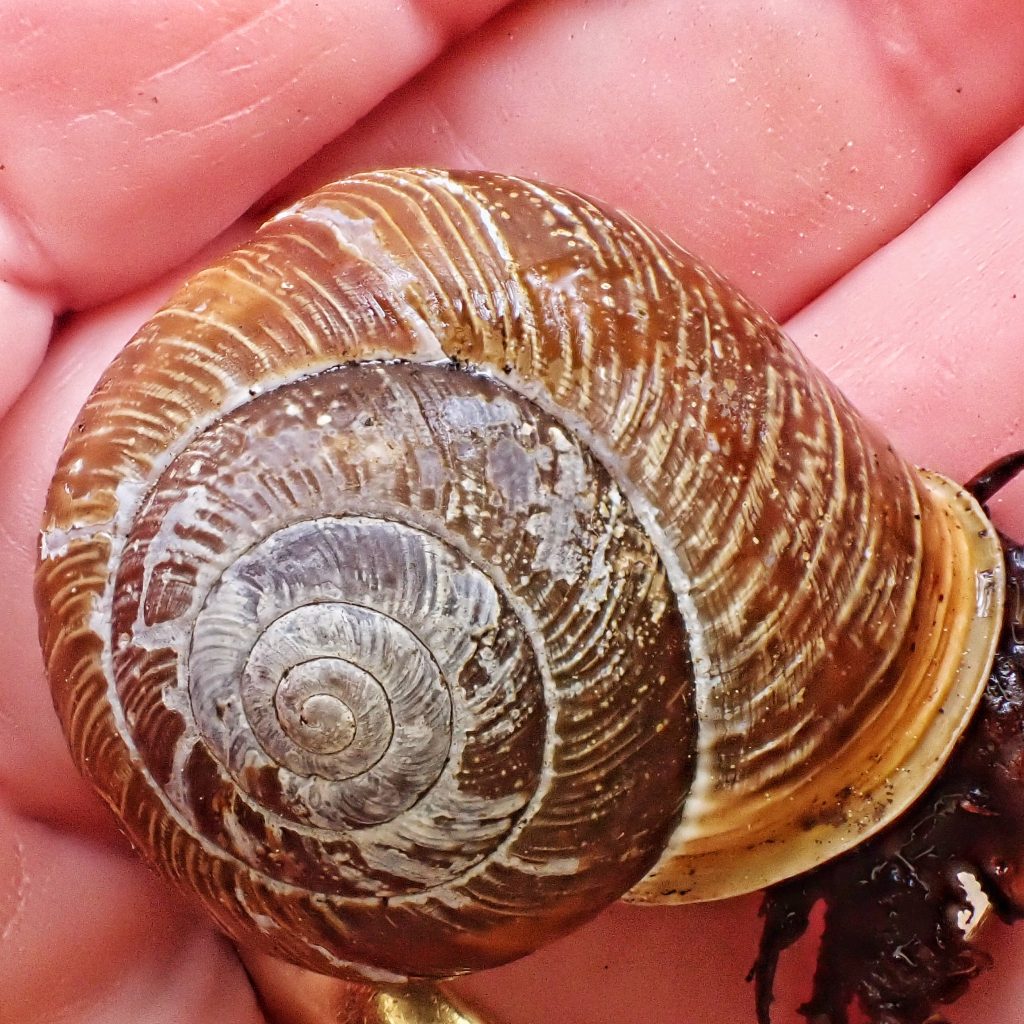
Eats– There seems to be no information on what younger juveniles eat, but older juveniles are known to feed on Urtica dioica (Stinging nettle) , and it is suspected that adults do as well; it is probable that adults also feed on fungi, algae, and decaying leaf litter.
Eaten by– Haplotrema vancouverense (Robust Lancetooth Snail) feed on the eggs and juveniles of this species, and juveniles and adults are probably prey for a variety of birds and mammals, as well as the carabid beetles Cychrus tuberculatus (Tuberculate Rare Snail-eating Beetle) and members of the genus Scaphinotus.
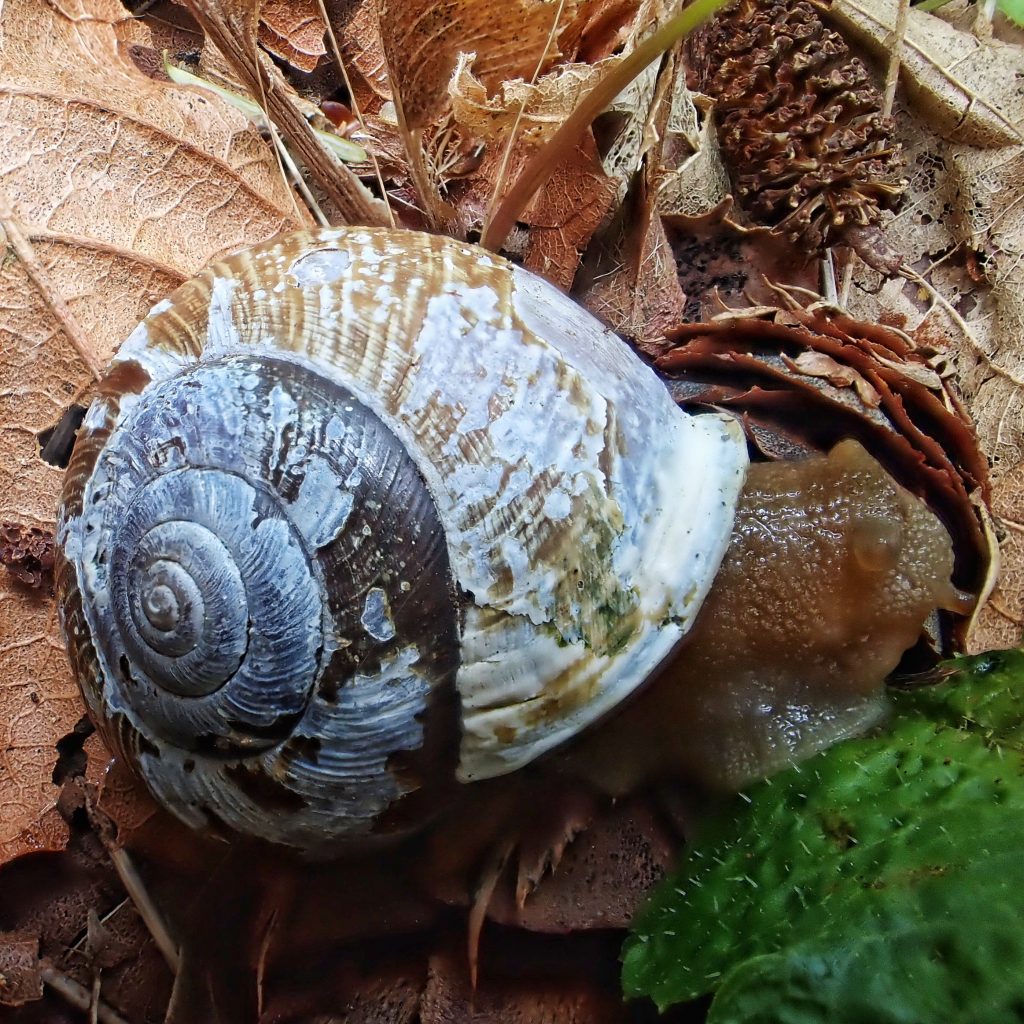
Adults active– “A consistent pattern of hibernation during the winter was followed by an active season in spring and summer, with activity levels tapering off in late summer and fall (Fig. 8). The earliest date of emergence from hibernation occurred on February 9, 2006. By March 20, virtually all individuals increased frequency of moderate and active days, with peak activity during the April–June mating and nesting season. The typical hibernation period was approximately November 5 to March 20, though hibernation sometimes began as early as late October. All snails were hibernating by November 26. During this period, mean daily high temperatures were 10.6⁰C (SD=2.6⁰C), with below-freezing temperatures common overnight. Throughout hibernation, five of 15 tracked snails moved; distances averaged 14cm (SD=15 cm). Hibernating snails were found oriented with the aperture up. Hibernating snails had complete evidence of Epiphragms; previous epiphragms was occasionally observed. Hibernating snails buried themselves 2–7 cm down into leaf litter, or occasionally moss or soil. During periods with above-freezing temperatures, a few individuals showed activity breaks in which they appeared to briefly feed on dead leaf litter within reach of their hibernation sites. However, moderate to active behavior among individuals was rarely seen throughout the hibernation period. Juveniles were not seen during the hibernation period. Shorter summer inactivity periods began for most snails by July 25. Snails continued with little or no activity, buried in moss, reed canary grass mats, or leaf litter, through the driest weeks, to August 10. Aestivation with epiphragm present was brief, often only a few days during the highest temperatures, but inactivity or low activity was common, sometimes as early as June 30. Moderate to active behavior resumed in September to early October.” Aforementioned paper by Steensma/Lilley/Zandberg (2009) http://www.sccp.ca/sites/default/files/species-habitat/documents/life%20history%20and%20habitat%20requirements%20of%20ofs%20in%20a%20bc%20population_Steensma_etal_2009_IVB_OFS.pdf
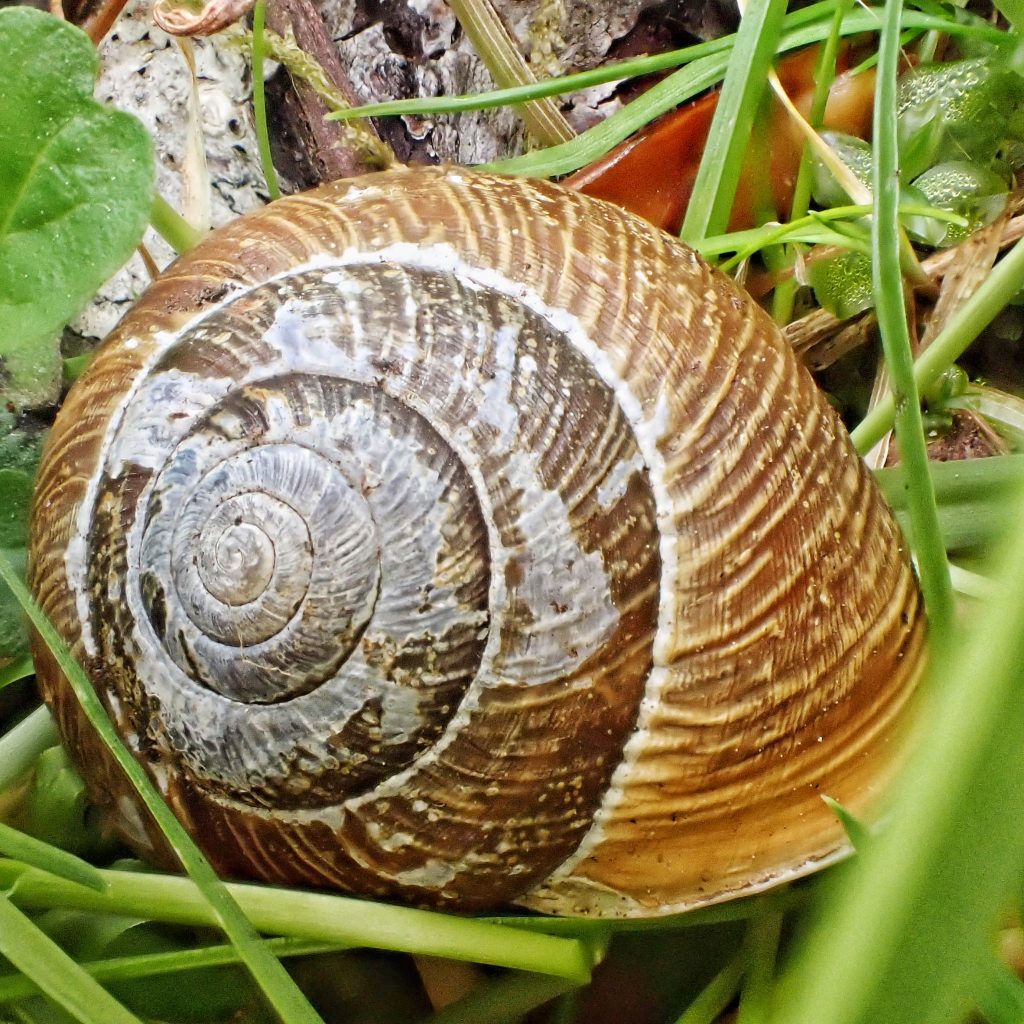
Life cycle– “ …[mating pairs] were active as early as February, with mating occurring as late as June (Kus 2005), but most mating pairs were observed from March 9, to May 4. The pair in captivity was observed to mate on August 10, at 18⁰C with artificially elevated humidity. Air temperature near mating pairs ranged 7.11– 17.0⁰C. No mating pairs were found below 76% relative humidity, with six of seven pairs mating at 81–100% humidity. Soil parameters (measured at three out of seven sites) showed that soil moisture at mating sites ranged 30–37%, soil pH 6.4–6.9, and soil temperature 9.91–13.0⁰C. Mating first occurred at day length >11h. Three out of three mating pairs assessed for additional parameters in 2005 were <1m of stinging nettle and within 3m of CWD [coarse woody debris], though stinging nettle and CWD were patchily distributed throughout the general mating habitat. Mating was often observed directly on CWD (Fig. 2B) such as logs (4 of 7 times), with mating pairs usually (6 of 7 times) part of a prior aggregation of eight to 14 snails. Aggregating snails showed social behavior of shell and antenna touching. Mating times, partially observed for three pairs, ranged 225–395 min. Throughout the spring, adults of Allogona townsendiana were observed partially burrowed into the ground, which indicated nesting behavior. The stages of nesting consisted of digging nesting holes, ovipositing, and burying nests. Nesting peaked in mid-May, with earliest nesting over the 2005 and 2006 seasons seen on April 20, and latest on June 20 (Fig. 4). Fifty- three nests were surveyed in total, 26 in 2005 and 27 in 2006. Nesting occurred on multiple substrates, predominantly leaf litter and soil (Fig. 5A). A majority of nests were found in either edge or interior forest habitats in contrast to open field/meadow habitats (Fig. 5B). Each snail usually dug a flask-shaped hole with the foot, often to a depth equivalent to the length of the entire snail, ±6–10 cm. Although the burrow was typically used for the nest, we also observed snails using pre-existing depressions under CWD, in moss, and in soil. On at least two occasions snails did not dig or use holes but laid eggs directly at the base of vegetation such as creeping buttercup (Ranunculus repens). In three instances, it was observed that two snails oviposited simultaneously in the same burrow. The captive pair also exhibited this, producing a total of 63 eggs in the same burrow. One of the captive snails was directly observed to produce 13 eggs over the course of 40 min (11:40–12:20 hours) on June 2, 2005. These were removed and measured the same day; average egg diameter was 3.1 mm (SD 5 0.4 mm), with size ranging 2.5–4.0 mm. Eggs were round, grayish- white in color and opaque, with a slightly grainy texture under magnification (Fig. 2C). It was observed that first eggs laid by the captive snails were generally larger than last eggs in the clutch. Average clutch size, measured in 2006, was 34 eggs per clutch (SD=9, range =18–54). Newly hatched juvenile snails were seen in the vicinity of several nests 8–9 weeks after egg laying (Fig. 2D). Hatching was directly witnessed in two nests, at 63 and 64d after oviposition. Incubation times appeared to vary for individual eggs within a single clutch in some cases. A total of 957 juveniles were sighted over the 2005 season. Most were found on the ground, largely on mixed soil and leaf litter or soil only, but also on a variety of other substrates (Fig. 6). Juveniles began visibly moving away from the nest within hours of hatching, but disappearance from nest sites occurred gradually over a 1-month period (Fig. 7). Hatchlings found at nest sites were ±2 mm in shell width. After 6 weeks, juvenile shell size reached 3– 3.5 mm. The shell was often transparent, particularly in the extremely delicate outermost whorl. The umbilicus was only partially visible. Juveniles were active and less easily stimulated to withdraw into their shells than adults, though by 4 mm they could form an epiphragm in dry weather. Juveniles remained <5 mm in diameter <2 months after hatching. At this point, juveniles were seen migrating further away from the nest site, although they became more difficult to detect. Throughout the 2006 migration period, 5% were observed climbing <1 m on tall vegetation such as stinging nettle, reed canary grass (Phalaris arundinacea), Indian plum (Oemleria cerasiformis), and Himalayan balsam (Impatiens glandulifera). On any given sampling day, the percentage of climbing juvenile snails ranged 0–17%; however, on two occasions, >60% of the juveniles within a single plot were found climbing. No relationship was found between climbing behavior and temperature or humidity…Juveniles are thought to take a minimum of 2 and probably 3 years to reach sexual maturity, although little information exists for early to late juvenile stages.” Aforementioned paper by Steensma/Lilley/Zandberg (2009) http://www.sccp.ca/sites/default/files/species-habitat/documents/life%20history%20and%20habitat%20requirements%20of%20ofs%20in%20a%20bc%20population_Steensma_etal_2009_IVB_OFS.pdf
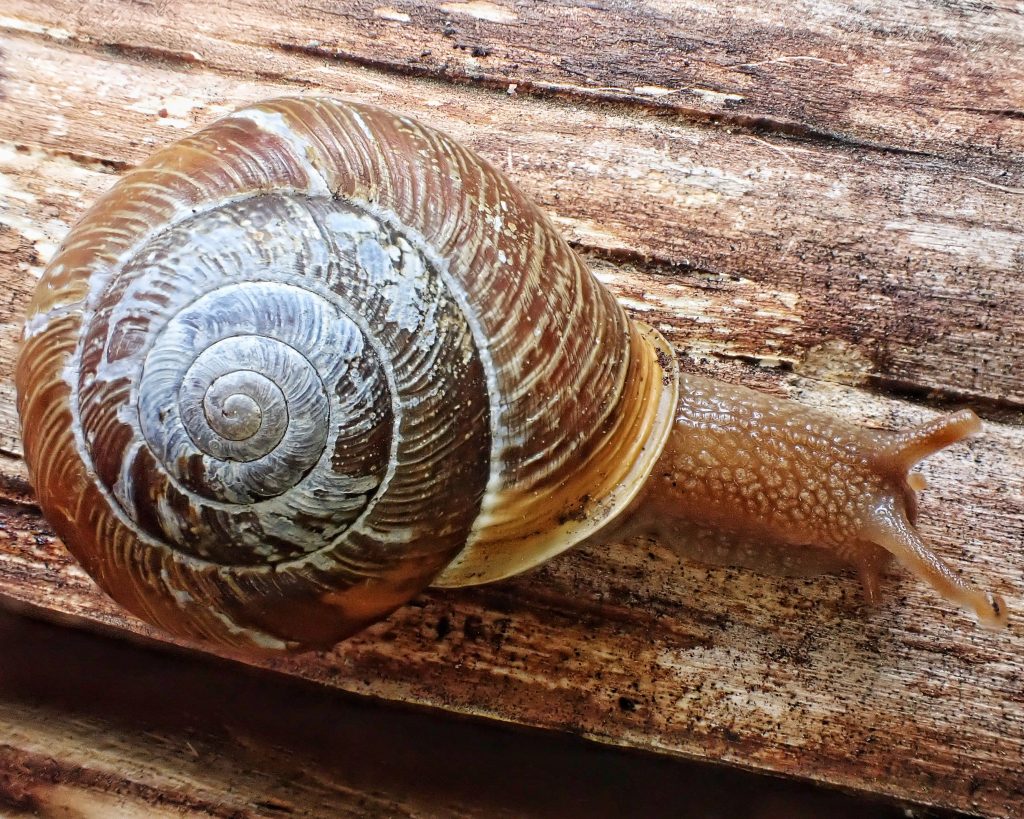
Etymology of names– Allogona is from the Greek words for ‘different gonads’, though I’m not sure what this refers to, since almost all land snails, including this species, are hermaphroditic. The specific epithet townsendiana pays homage to John Kirk Townsend (1809-1851), who explored and collected extensively in the PNW.
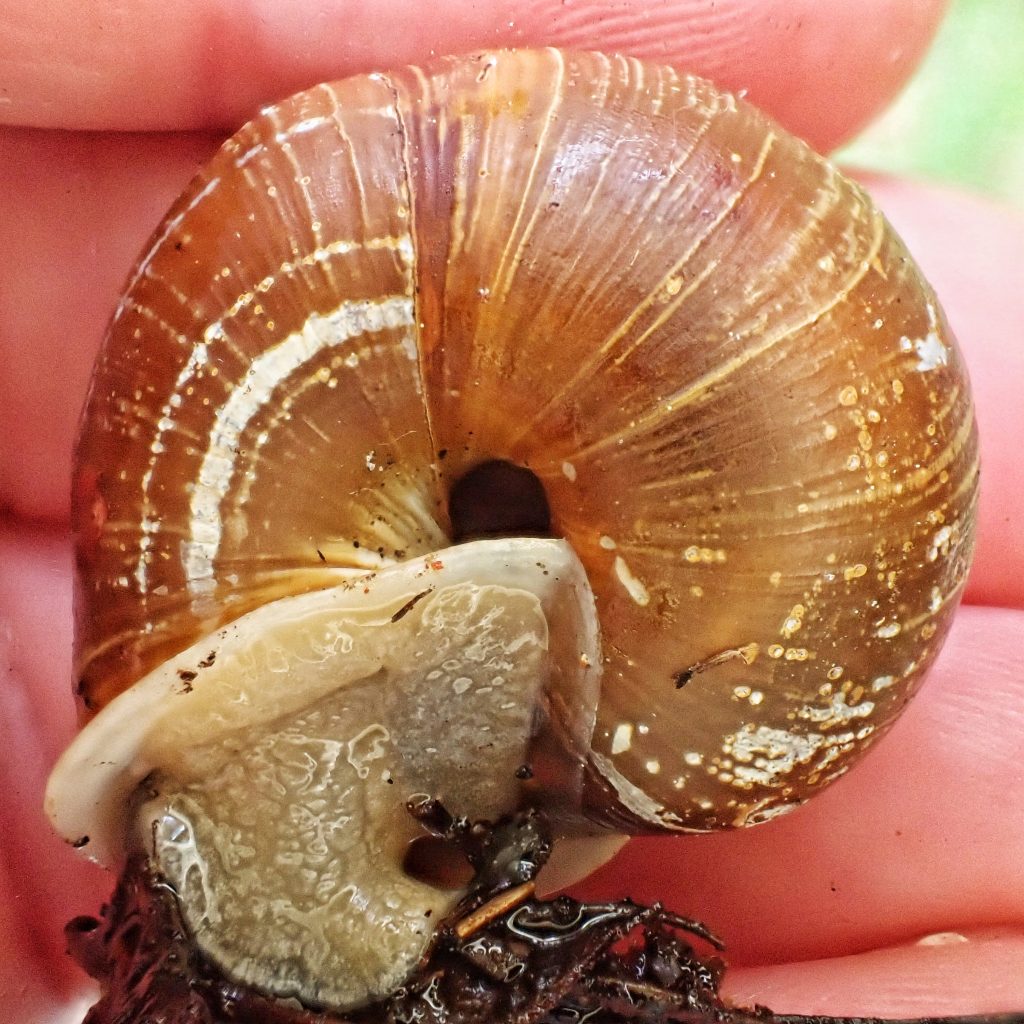
University of Utah entry for Allogona townsendiana Untitled Document
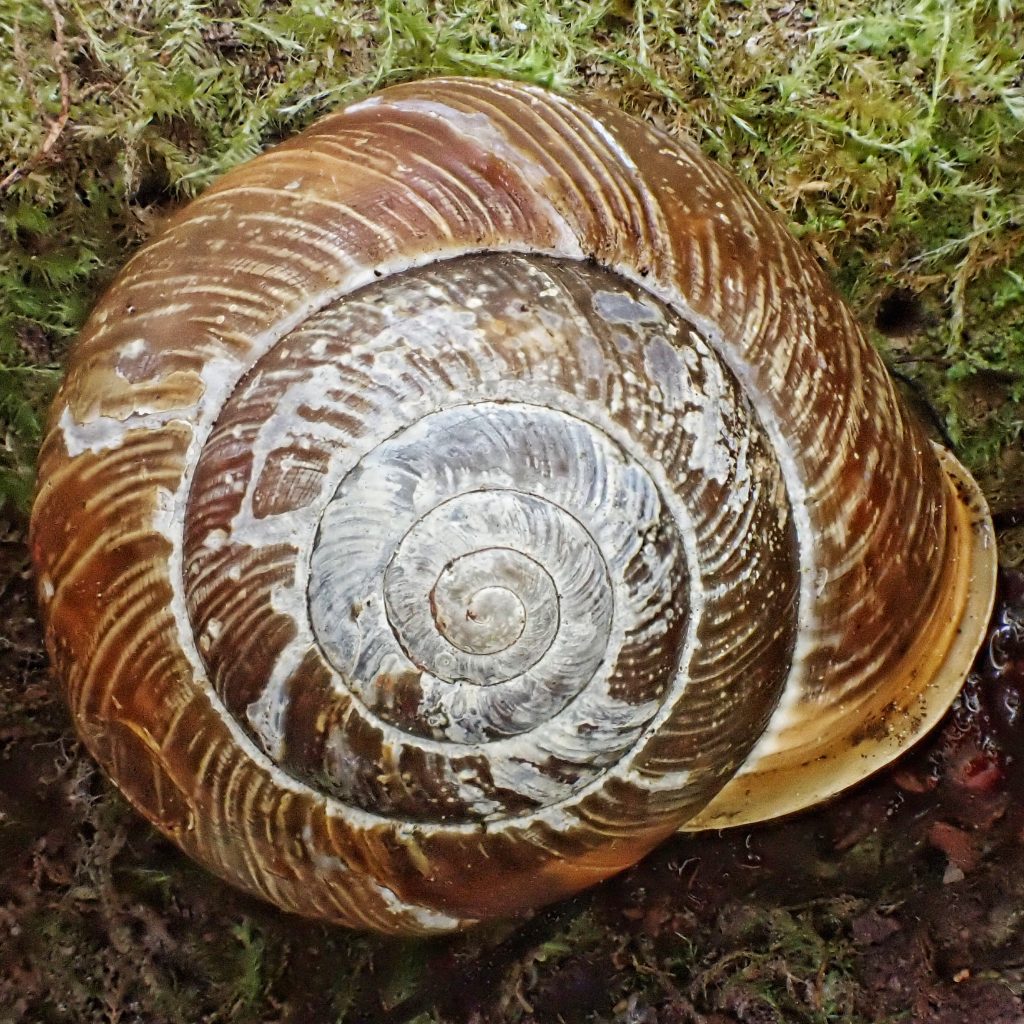
Very interesting! We have snails in our suburban Portland garden, but our neighbor has not found any in their yard. I have found snails on our garden pots of ornamentals, but mainly in a patch of bunchberry and mixed vegetation — we don’t have any nettles. I don’t know if it is same type of snail. A friend has them in her Tualatin garden (south of Portland).
So glad you are posting again and hope you are well and happy.
Thanks for your appreciation and support, Jennifer! If you wanted to email me photos of your snails I could try to figure out what they are. Recreationalnaturalist@10000thingsofthepnw.com